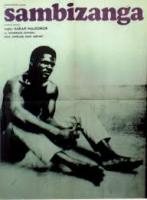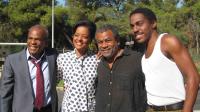film
Articles tagged with film
Tag Archive
- ...
- 2020
- 9/11
- agronomy
- América
- Ana Paula Tavares
- angolanidade
- antropologist
- Ateler Mutanba
- Black movement
- black power
- buenos aires
- Caldo do Poeira
- Charlie Hebdo
- Circulations
- Coloniality
- cultural memory
- Dak'art 2016
- Diálogos com Ruy Duarte de Carvalho
- Dictatorship
- Diego Rivera
- édouard glissant
- Ella Baker
- Empresas
- Epstein
- ethnicity pay gap
- EUA
- Exhibition
- Exhibition-Fair Angola 1938
- Felwine Sarr
- feminista
- festivity
- Fim do Mundo
- Frelimo
- germany
- Giorgio Agamben
- Harare
- hospitalidade
- Ilha de Santiago
- imigration
- impasse
- Índios
- institute
- Jornalism
- José Cabral
- Krik-krak
- LAC
- land-ing
- Lisboa
- London
- lucio lara
- lusotropicalismo
- maputo
- Marielle
- Mayra Andrade
- mc k
- Mella Center Lisboa
- memoirs
- microeconomics
- Miguel Gullander
- mitos
- morna
- museu das descobertas
- não dá para ficar parado
- Negros
- patera
- Paulina Chiziane
- PCP
- Pedro Coquenão
- perfomance
- performance
- photographic heritage
- plateau
- políticas de ação afirmativas
- postcoloniality
- Projeto Popular
- protests
- próximo futuro
- rabòday music
- racist
- representações
- safari
- Sao Tomé e Príncipe
- satire
- senegal
- senhor
- settlers
- South Africa
- Super Camões Richard Zenith
- tanzania
- travelling
- Tropicália
- Tuchangamke
- Turia El Glaoui
- Uanhenga Xito
- Vazante
- Visual Cultural
- women rights
- World Philosophies
- “Pessoa
 A film is often supposed to be a means of communication, and following this principle, it seems interesting to gather different understandings in order to broaden one’s own vision, and that is precisely what the freedom of an experimental visual production can offer. This act of collecting is all the more interesting as it clusters understandings coming from viewers of different cultures. It is in this sense that the director, who has studied oriental languages - notably Persian - and has a great interest in Japanese culture, fosters the creation of multi-centricities, in this case a German-Nippon-Persian-tricentrism, into which viewers can immerse themselves and come out more enriched.
A film is often supposed to be a means of communication, and following this principle, it seems interesting to gather different understandings in order to broaden one’s own vision, and that is precisely what the freedom of an experimental visual production can offer. This act of collecting is all the more interesting as it clusters understandings coming from viewers of different cultures. It is in this sense that the director, who has studied oriental languages - notably Persian - and has a great interest in Japanese culture, fosters the creation of multi-centricities, in this case a German-Nippon-Persian-tricentrism, into which viewers can immerse themselves and come out more enriched.  How MPLA’s ideology, in particular its Marxist-Leninist values, shaped Sambizanga? In which ways the film was shaped, by both Maldoror and the MPLA, as a piece of propaganda, in order to gain international recognition for the injustice of the Portuguese rule in Angola and credibility for the MPLA in the international community. Maldoror has said that she tried to accomplish three things with Sambizanga: capture a particular movement in the history of the Angolan liberation struggle; create a film that would educate Westerners to the situation in Angola; and tell the story of a revolution from the perspective of a woman. This dissertation will argue that these three aims can be linked to the propagandistic elements of the film and the ideology of the MPLA.
How MPLA’s ideology, in particular its Marxist-Leninist values, shaped Sambizanga? In which ways the film was shaped, by both Maldoror and the MPLA, as a piece of propaganda, in order to gain international recognition for the injustice of the Portuguese rule in Angola and credibility for the MPLA in the international community. Maldoror has said that she tried to accomplish three things with Sambizanga: capture a particular movement in the history of the Angolan liberation struggle; create a film that would educate Westerners to the situation in Angola; and tell the story of a revolution from the perspective of a woman. This dissertation will argue that these three aims can be linked to the propagandistic elements of the film and the ideology of the MPLA.  Our interview takes place in Ipanema, Rio de Janeiro, where Zézé Gamboa and a few members of his team are resting for a few days after the intense shoot for his film “Grande Kilapy”, which tells the story of Joãozinho das Garotas, an Angolan during colonial times who engineered a sting with the colony’s finances. There’s just a week in Luanda left for the film to be ready for editing, following the takes in Portugal and Paraíba in Brazil, so this is the right time to weigh up the experience and bring to public attention some aspects of the work done by someone who is considered to be “the most consistent” of Angolan directors.
Our interview takes place in Ipanema, Rio de Janeiro, where Zézé Gamboa and a few members of his team are resting for a few days after the intense shoot for his film “Grande Kilapy”, which tells the story of Joãozinho das Garotas, an Angolan during colonial times who engineered a sting with the colony’s finances. There’s just a week in Luanda left for the film to be ready for editing, following the takes in Portugal and Paraíba in Brazil, so this is the right time to weigh up the experience and bring to public attention some aspects of the work done by someone who is considered to be “the most consistent” of Angolan directors. 